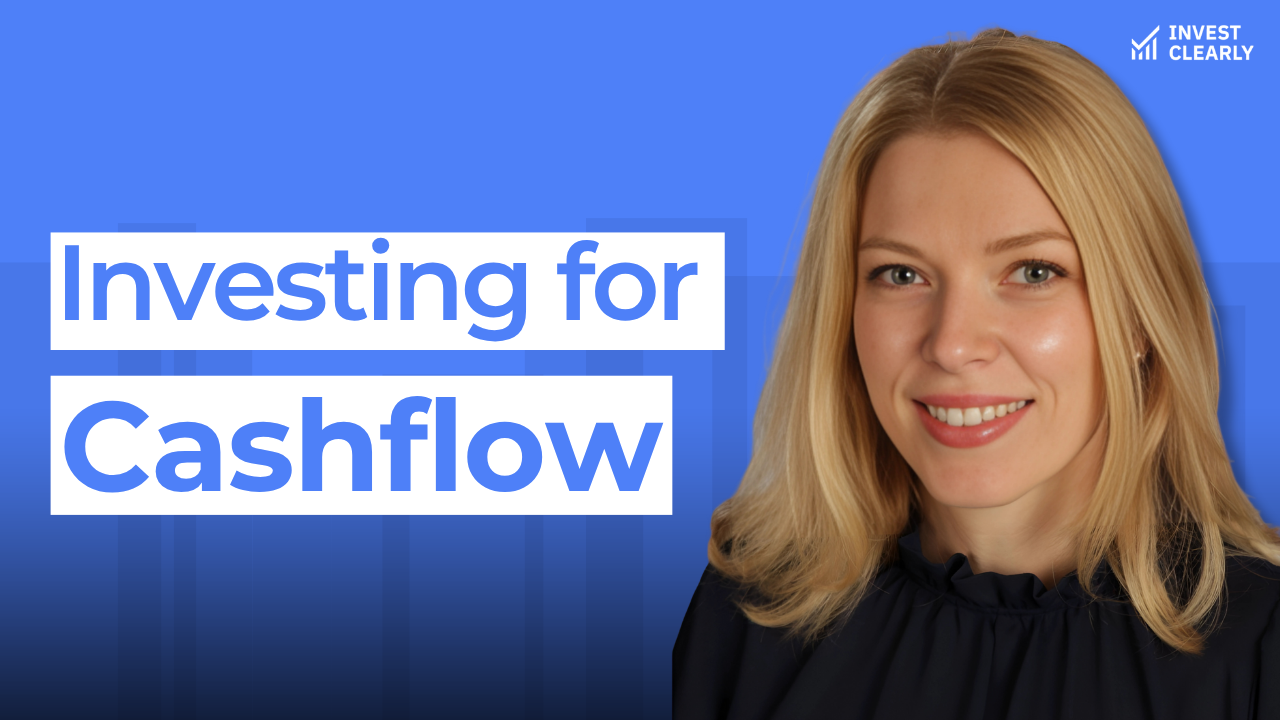
How a Professional LP Conducts DD | Leyla Kunimoto
Never miss an Invest Clearly Insights article
Subscribe to our newsletter today
Leyla Kunimoto shares her insights on the current real estate investment climate, focusing on trends in deal flow, cash flow, and how to quickly underwrite deals. She discusses her approach to evaluating investment opportunities, the role of AI in streamlining analysis, and the significance of building trust with sponsors. Leyla also highlights the need for caution in preferred equity deals and emphasizes the importance of investor education and knowledge sharing in the real estate investment space.
Invest Clearly Podcast - Episode 2 Podcast Transcript
Guest: Leyla Kunimoto, Accredited Investor Insights
[00:00:00] Leyla: I personally invest for cash flow. I don't invest in deals that don't generate cash flows.
[00:00:05] Pat: What are you seeing in terms of trends and themes across some of the deals and decks you're seeing today versus maybe a few years back?
[00:00:13] Leyla: I'm seeing much more conservatively underwritten deals.
[00:00:17] Leyla: Deal flow is down by a factor of three to four, but they're more conservatively underwritten.
[00:00:22] Pat: Would you say there are better opportunities even though the deals are lower right now?
[00:00:27] Leyla: The biggest unlock for me as an LP has been networking with other LPs and finding their opinion on certain sponsors. People love the ability to use AI to do due diligence.
[00:00:40] Pat: What would you suggest? Like, hey, this is my minimum of how many deals I'm looking at a week to find my one position.
[00:00:46] Leyla: So here's what I would suggest, number one.
[00:00:49] Pat: Investors and operators, welcome back to the Invest Clearly Podcast. I am your host and CEO of Invest Clearly, Pat Zella. In this episode, we sit down with Leyla Kunimoto, full-time LP and author of the fast-growing newsletter Credit Insights. We talk deal flow, due diligence, private credit, and what it takes to really sharpen your buy box.
[00:01:07] Pat: She shares why more LPs should widen their funnel, how she underwrites sponsors, and how she's teaching AI to do the first pass on every deal - what she calls "Mini Leyla." If you're a passive investor trying to level up your decision making, this episode's for you.
[00:01:42] Pat: All right, Leyla, thank you for joining us. If you want to get started, why don't we take just a few seconds to discuss your background and tell us a little bit about Credit Insights.
[00:01:53] Leyla: Yes, thank you, Pat. Thanks for having me. My name is Leyla Kunimoto. I am an investor. I invest full time. I am not a GP. I'm not a sponsor. I don't raise capital. I don't come in with capital into other people's deals. I just invest my own money and I've been doing this for about five years. I have been sharing my learnings and what I see out in the marketplace in a public format.
[00:02:19] Leyla: I write a newsletter about this - about trends and things that I see as an LP that are being pitched to me.
[00:02:28] Pat: That's interesting. So I often see the path of an LP like multiple holdings and then lead into either fund of funds or GP route. Is there any reason why you decided to go to advisory insights, analyst role versus actually raise capital yourself?
[00:02:47] Leyla: Yeah, well, I do put my own capital to work with other people's deals. I decided not to become a money raiser for a number of reasons, but one of them being it's really difficult for myself to find deals that I want to invest into. And typically those deals are not the deals that sponsors have a hard time raising capital for.
[00:03:10] Pat: For sure. In terms of the deals you're looking at in the flow, I know you are big on investor education around due diligence and how to leverage proformas and things like that. What are you seeing in terms of trends and themes across some of the deals and decks you're seeing today versus maybe a few years back?
[00:03:32] Leyla: Yeah, so I'm seeing much more conservatively underwritten deals. Just for background, for the listeners, I invest in a number of asset classes - mostly real estate, private credit. I look at private equity deals as well. So what I'm seeing, sticking to the real estate side of things, I'm seeing more conservatively underwritten deals.
[00:04:01] Leyla: The volume of deals is down by probably a factor of three to four times, so there's not quite as many deals. I'm seeing far fewer financial engineered deals where you have multiple tranches of equity - Class A, Class B, Class C - although I recently ran into one, which surprised me.
[00:04:24] Leyla: I'm seeing a lot more private credit offerings and among the LPs that I speak with, there's a lot of interest in private credit in general. I think people are now more focused on getting distributions on time than they were maybe four or five years ago.
[00:04:45] Pat: Sure. And with the deal flow down by a factor of three to four, but they're more conservatively underwritten, would you say there are better opportunities even though the deals are lower right now? Are you seeing yourself placing capital at the rate that you used to, even though deal flow is down, but they're more conservatively underwritten?
[00:05:12] Leyla: So I personally invest for cash flow. I don't invest in deals that don't generate cash flow. So that limits the universe of things that I'm interested in quite substantially. Because of where the rates are for your typical commercial real estate deal, for your typical value-add deal, pricing has improved, but cost of debt has increased so much that the deals - yes, they're being bought at better cap rates.
[00:05:46] Leyla: The assumptions are a lot more conservative. Cash-on-cash has gone down during this time. So I think the deals are better. I think there's an argument to be made that deals that are being done today are probably going to be better deals just because the basis is so much lower than it was in 2022.
[00:06:13] Leyla: You have a bunch of 2022 deals that even if they were financed with fixed rate debt and they're doing fine, the value of those deals has dropped so much that it's going to be a while before that value comes up. So today's deals are being bought at a better basis. But the cash flow, because of cost of debt, the cash flow is lower than what I used to see in a lot of instances.
[00:06:39] Leyla: And part of it is, of course, you can throw any number into the proforma and show any cash flow you want. So I underwrite most of the deals that I'm interested in. I underwrite them myself, or I stress test them myself. They stress better for exit cap rates today, obviously, because they're being bought at higher cap rates, so there's more room to go. Cash flow is tighter today than it used to be.
[00:07:08] Pat: Are you seeing that across all asset classes? Because I know you had done a few articles recently on the industrial space. Is it similar across the board?
[00:07:20] Leyla: In industrial, I am seeing better cash flow deals, better cash flow plays - that's for sure. Retail I invested in retail deals, strip malls type of thing. Those things cash flow quite well. There's not as much of a boost on the backend in value-add. Yeah, so multifamily, by and large, the cash flow - pricing is not quite there where the cash flow is going to be 8% out of the gate unless the sponsor is doing something, unless it's a very unique deal.
[00:08:00] Pat: Sure. And are you seeing many of those unique deals or truly unique? It's just not happening.
[00:08:07] Leyla: So I see unicorns. The last unicorn that trotted across my desk, I invested in. That sponsor had another unicorn. They're not unicorns - it's a very specialized play and it's a very unique kind of situation. So they do happen. You have to have a wide funnel, and that's actually my one piece of advice for LPs.
[00:08:34] Leyla: Whatever you do, increase the funnel of deals that you look at. It's easy today - it's much easier than even five years ago. There are plenty of platforms. There are lots of LPs who can share the deal flow. But I feel like seeing a lot of deals, seeing that huge deal flow makes you sharper as an LP in what you want.
[00:09:02] Leyla: That took me a little bit to define my buy box. I know what's in my buy box when a deal lands on my desk. Five minutes is all it takes me to say, do I want to look into it or do I not? It does not fit my buy box. And my buy box is going to be very different from yours, Pat. It's going to be different from everybody who's listening to this podcast.
[00:09:21] Pat: Sure. Is your underwriting process more of a learned or is it science based where, hey, here's the first three things, five things I look for, and then it's a yes or no, and then onto the next one?
[00:09:34] Leyla: It's both. I look at everything just because I write about it. So I share the knowledge and I feel I need to look at everything because I can see what's happening in the marketplace. I can see what sponsors are doing. I can see in different asset classes how things are shifting.
[00:09:55] Leyla: For most LPs, that's just simply not feasible. Nobody has the time. So what I do for my own capital, when I consider my own capital, I look at several things. To me, cash-on-cash is perhaps the most important metric or one of the most important metrics. I look at the overarching thing here - the sponsor track record. What I know about the sponsor. Have I worked with the sponsor before? What do people that I respect say about the sponsor? That kind of thing.
[00:10:20] Leyla: Once we pass that filter, the next filter is here's the deal. And in that deal, does it fit my criteria? Is it underwritten conservatively? Are they projecting 5% rent growth for the next 10 years? And if that 5% rent growth doesn't materialize, how hurt will the exit be? How hurt will the LP equity be on the exit? Those kind of things.
[00:10:38] Leyla: There's a couple of things I look at. I wish I could say, here's a cap rate below which I just won't look at it. I'll look at everything. There's not one single metric. If there's one metric that is telling, it's stabilized yield on cost, and I write about it all the time. It's because it's really easy to calculate once you know what you're looking for. It applies to all asset classes.
[00:11:04] Leyla: In commercial real estate, you can take an office deal that's 50% occupied and you can run that metric and see what that yield on cost is once the occupancy is up to where the deal is stabilized.
[00:11:40] Leyla: So that's probably the one metric. And the absolute number is different for every asset class, for every situation. It's not like, well here's 7.5%. I wish I could say, here's the number, and everything above that number is a go, and everything below is a no go. It doesn't work like that, unfortunately.
[00:12:02] Leyla: But again, with enough deal flow, if you're tracking this, you will see those unicorns. Sometimes a unicorn comes across - the unicorn that I invested in had high eights or low nines for stabilized yield on cost. And it's not just numbers off the wall - it's numbers that are conservative, that are fairly conservative that get us to that kind of yield on cost.
[00:12:29] Leyla: That's attractive for that particular asset class. That was an attractive yield for the vintage. So I track that.
[00:12:37] Pat: When you think about - I mean, your answer might be different from everybody else's, I'm assuming you see a lot more deal flow than probably most of the listeners on here. But what is enough for you? Like how many do you look at per day, per week? And what would you advise? The listener, the viewership's going to be a mix of people just getting started looking to educate themselves, but also people looking for deal flow, actually evaluating sponsors based on deals in front of them. What would you suggest? Like, hey, this is my minimum of how many deals I'm looking at a week to find my one position.
[00:13:12] Leyla: So here's what I would suggest. Number one, identify what you're after. Whoever's listening to this, they need to know what they're after. Are you after growing your equity or are you after receiving steady cash flow? That first question will weed out 50% of everything you should be looking at.
[00:13:33] Leyla: Question number two is, how comfortable are you with triple net deals, industrial retail office deals? Those generally, speaking in generalizations, will have higher cash flow, but there's a higher risk that that cash flow can evaporate in a second. Because if it's a two-tenant industrial box somewhere in Oklahoma, if one tenant moves out, there's a high probability that that deal's going to sit vacant for 6, 9, 12, 18 months, which will most definitely impact the cash flow.
[00:14:16] Leyla: So once you have identified what you're comfortable with, the next step is to say, okay, so I want at least - let's say I'm just throwing numbers - let's say I want at least 5% cash-on-cash right out of the gate. And that cash-on-cash needs to be fairly durable. That will further narrow down the list of things one is looking at.
[00:14:40] Leyla: As far as numbers, I look at 10 to 20 deals a week. And when I say I look, I open them, I look at the proforma. I have a down path where I can open a deal, scroll down, take a look at the numbers and say, do I want to spend another 20 minutes on this or not?
[00:15:03] Leyla: That took time to get to this level. What I do now, what I've been working on, is I've been trying to find a way to scale that knowledge, to bring it to everybody at scale. I know a lot of investors, I know hundreds, if not thousands of investors, and very few of them have the time to do the volume of due diligence.
[00:15:31] Leyla: So what I've been trying to do is I've been trying to train AI and large language models on how to do my job, and we're getting there. I write about it all the time in my newsletter. It's 80% there, so you can now screen deals in 20 minutes, high quality deal screening. It's not - obviously, an LLM is not going to tell you, hey, this is a great deal. Hey, this is not so good. But you can get to the point where an LLM can take a look at your deal. You can upload a deck. It would highlight the things that are out of the norm. It would highlight red flags. It will come up with list of questions for the sponsor.
[00:16:17] Leyla: Doing that on every deal that comes across your desk in the beginning, I think that's a great learning exercise. It's easy, it's free. There's plenty of things LLM will teach you and there's plenty of things that it will find that you as a new investor might not be able to pick up on from the deck. So highly recommend it.
[00:16:40] Pat: Yeah, I see you are writing all over Mini Leyla, right? Is that what you were calling it?
[00:16:45] Leyla: I call her Mini Leyla.
[00:16:46] Pat: Mini Leyla. So when you think about training Mini Leyla, I guess someone doing this for the first time, right? They're getting started and they're investing and they're trying to train AI to start breaking down decks.
[00:17:02] Pat: Is the training process uploading list of questions or how did you get Mini Leyla to match the strategic, both the art and the science side of actual Leyla when it comes to evaluating deals? Because there's, I'm assuming, a level of comprehensive underwriting that you do when you actually find something you like. And so is Mini Leyla trained to do that five-second, five-minute test that you do now or is it getting pretty deep for you?
[00:17:28] Leyla: So Mini Leyla. What I've done with Mini Leyla is I've written a series of prompts and I've spent weeks fine-tuning the prompts, the sequence of prompts to get Mini Leyla to give me an intelligent result. Because in the beginning, if you take a deck and upload it to ChatGPT and say, tell me what you think, it's going to tell you what's in the deck.
[00:17:50] Leyla: You don't want that because in the deck, no sponsor is going to come and say rent assumptions are kind of questionable. So you want Mini Leyla to - and that's my job - my job when I look at decks is to question assumptions. It's to question them in a way that's backed up with data in the background.
[00:18:15] Leyla: If I see a deck in a city - let's say Kansas City - I'm just picking a city that I've recently looked at, and the deck shows three and a half percent rent growth, and that's a multifamily property. And I know that in that city, historically the rent growth is around 2%. That delta, the Mini Leyla needs to catch that. Mini Leyla needs to flag that and say, why is this so different from the historical norm?
[00:18:43] Leyla: So that's what I've been trying to get Mini Leyla to do. And it's not perfect. A lot of it depends on the data sources. So what I've done, I've done a workaround. I have one LLM trained to find data sources for me. It's a simple prompt. I run Gemini, and Gemini does - of all LLMs that I've tested - Gemini does the best at this step. Basically say, okay, find me this, this and that. Make sure those sources are reliable. Give me a report on this submarket. So if I'm looking at an industrial deal in Columbus, Ohio, I will say, okay, here's the city and state. Run this and tell me everything you can find out there and highlight the sources.
[00:19:32] Leyla: So we take that information, we then feed that with the deck to another LLM, and we say, okay, we have this information. We have these sources. Here's the deck. Now here's the five prompts that I want you to run in sequence. Make sure you run through them and make sure you highlight things that look odd to you, and then let's stress test them. And then if you can't stress test, give me the questions, the follow-up questions for the GP.
[00:19:58] Leyla: That solves 80% of the issues that used to land in my inbox. A lot of investors would come to me and say, hey, I'm looking at this. What do you think? And I would open the deck and I would look at the deal and I would say, well, here's this, this, and that. And it's kind of a quick look and kind of a quick feedback. You can now do it for free with a GPT, with a chat. I use Notebook LM. There's a reason for that.
[00:20:42] Leyla: I write about it extensively. If anybody's interested, they're more than welcome to on my newsletter. In fact, subscribers to my newsletter will get the five prompts. Subscribers to the newsletter will get a welcome email with those prompts. I think it's such a great hack out there. It's such a great tool. Everybody should have it. So Credit Insights.
[00:21:06] Pat: Are you talking about scaling this for investors. I didn't know if you had any plans to actually license this or provide service around it, or this is, hey, this is for me and I'm sharing it. Here are the prompts. Get after it.
[00:21:17] Leyla: You know, I think I don't want to gatekeep this knowledge because it's out there. I am on the forefront. I'm half a step ahead in this and I think it's such a great tool. I'm not gatekeeping it. I have been trying to find a way to kind of package it up into one thing. It's beyond my level of ability at this point, just because different LLMs need to be run to do different tasks.
[00:21:45] Leyla: I can't work - find a workaround. I'm sure somebody smart can do it, but yeah, investors, most LPs don't - especially those who are not super tech savvy - just subscribe, get the five prompts and run them. It's going to be a big unlock.
[00:22:04] Pat: That's great. Yeah, awesome. You mentioned something earlier that I didn't dive too far into, but it's kind of honestly the foundation of Invest Clearly. You talked about evaluating the actual sponsor. A big part of what we do is to help people with their sponsor valuation, not just on the quantitative like, hey, what is the market and financials and things like that, but what are investors actually experiencing? How do you differentiate operational expertise versus someone who may have ridden the wave over the last few years? And then if you don't have someone in your network that has worked with them or you haven't worked with them before, how are you going about that process?
[00:22:46] Leyla: Yeah. And I think this is - and genuinely for the listeners, Pat is not paying me to say this - but I think platforms like Invest Clearly, that is such a huge service to LPs and I would encourage everybody who has invested in deals to submit their rating. It helps everybody else.
[00:23:07] Leyla: So the biggest unlock for me as an LP has been networking with other LPs and finding their opinion on certain sponsors. There's nothing that carries more weight in my mind then knowing that somebody whose opinion I trust and respect has good things to say about the sponsor.
[00:23:35] Leyla: If somebody I know - I know a number of people whose opinion I listen to - if they tell me, hey, look at XYZ sponsor, I will go and look at them. And the next step is separating, is looking at the track record. And track records are such an important thing for sponsors to include.
[00:23:59] Pat: All right, that's great. I guess I'll just ask you one more question then we can get into Credit Insights if you want.
[00:24:08] Leyla: Yeah, sounds good.
[00:24:09] Pat: My final question that I ask everybody: what is one area of passive investing that you think needs to die?
[00:24:20] Leyla: It is so hard to pick just one.
[00:24:22] Pat: Yeah, that seems to be what everybody says.
[00:24:25] Leyla: Yeah, I think what I'm seeing a lot right now is preferred equity, so-called preferred equity deals. This is equity that's being raised for existing deals that are maybe in trouble or needs new capital infusion. Some of those deals are - some of those preferred equity funds are going into deals that are really, really in trouble. And it's not perhaps very explicitly stated in the pitch decks.
[00:24:52] Leyla: I'm seeing a lot of this. I'm seeing a lot of LPs who see, well, hey, listen, this is going to be 18% preferred return. It's all good. We're ahead of the common equity. And I think there needs to be caution.
[00:25:17] Leyla: It doesn't mean that those deals need to die. There are plenty of great preferred equity deals. I'm invested in preferred equity where there's ample cushion and equity for the preferred sleeve and the common equity sleeve. Not every deal with preferred equity is horrible, but there are some, and I think the bad apples just kind of need to go.
[00:25:41] Leyla: A lot of LPs don't know what questions to ask to parse out where the risks are in some of those deals.
[00:25:49] Pat: Sure. What is your number one question to parse out the risk in those deals?
[00:25:55] Leyla: There is a series of questions I would ask. I would start with what are the funds going to be used for? Is it - if it's an existing deal, are we using those funds to pay down the loan? Are we using those funds to buy a rate cap? Are we using those funds to pay off GP loans? So the sponsor has lent money to the deal and are these funds going to be used to pay the sponsor back? Those are the questions I would ask.
[00:26:18] Leyla: Another set of questions I would ask would be around the debt on the property, especially if the funds are being used to buy a rate cap on a floating rate debt deal. And there's only one actually - what's the debt service coverage ratio? Which basically tells you how well the property cash flows to cover the debt obligation. And if it's below one, that means the property is not generating enough cash flow to pay interest on the loan, which brings up a whole slew of other things to ask.
[00:27:03] Pat: Sure, sure. Awesome. That's fantastic. All right, so I'd love to talk more about Credit Insights. I know you've written an article for us, which is awesome. I follow your stuff. You've honestly inspired my partner Joe to write things. It is just the tone in which you do it. I mean, I think anyone who hasn't read your stuff should, because I feel like there's a level of dryness across this industry, and you don't have that. It's entertaining. It's not boring, but it's also educational. I feel like there's only so much fun you can put into financial due diligence, but there's an angle that you take that's pretty entertaining and educational at the same time.
[00:27:40] Pat: So I'd love to learn more about what you're doing there. And ultimately, the goals of it beyond just maybe education - what do you hope this turns into or do you have additional routes of education besides the content and the Substack?
[00:27:58] Leyla: Yeah, so thank you for your kind words. It's been - the newsletter has taken a life of its own and it's been a huge pleasure to watch it grow. We started it with the goal of sharing the knowledge because I saw just how little investors know. By and large, a lot of the information that's out there is from sponsors, and sponsors are - it's great and they're doing a great job educating the investors, but they take a certain stance.
[00:28:29] Leyla: And I wanted to give the alternate perspective from somebody in my seat, from somebody whose money is being invested into those deals, and I wanted to kind of educate and highlight things that should be done better. Frankly, there is a lot of stuff - a lot of my readers are GPs and I really, with my heart of hearts, I hope that everything I write makes this entire universe better for both parties involved, GPs and LPs.
[00:28:54] Leyla: I think it's a wonderful thing to give access to things that most LPs can't buy on their own. I cannot go and buy a $20 million industrial complex in Columbus, Ohio, but I can invest in partial ownership of that via syndication.
[00:29:16] Leyla: So that's been the goal. It's been a huge honor and privilege, honestly, to write, and we're with over 4,300 subscribers at this point. I try to replicate - the biggest goal here is to take my knowledge and give it out at scale. I don't know what it's going to look like in five years from now, but right now it's looking like the newsletter format has been the most effective for me to kind of share that knowledge and everybody who's interested in this topic, I think you will find a lot of interesting things.
[00:29:45] Leyla: On the newsletter, I publish two articles a week. Some of those articles - every other week we publish a case study and it's based on a live deal that has come across my desk. It's something I anonymize all of it. So you cannot trace it back to the GP. But it's based on the real life deal that I have seen and I kind of parse it out and say, okay, here's what's attractive and here's what's really questionable.
[00:30:09] Leyla: And those have been a huge hit. But the other thing that's been very big is people love the AI, the ability to use AI to do due diligence. It's - I'm riding that wave right now because I think that is the unlock to scale.
[00:30:46] Pat: Awesome. Awesome. Well, Leyla, thank you so much for coming on and honestly, to know you has been awesome. We've met a few times before this. Like I said, you've written an article for us that I'm excited to get out there. Where can people find more about you?
[00:31:02] Leyla: Yes, people can find me on social media. I'm Leyla Uni. Everybody can find my newsletter. It's accreditedinsight.com and I would love to connect. Yeah, if any of the listeners have any suggestions for what they want me to write about, I'm very open to this. The goal is to bring knowledge to LPs and GPs and anybody who's in this universe - wealth managers, RIAs.
[00:31:29] Leyla: The goal is to kind of make the space better for all of us and even out the playing field as far as the information and balance. And you guys are helping with that. I think Invest Clearly - the goal there and the mission that you guys are accomplishing is fantastic. Much needed in this space.
[00:31:50] Pat: Thank you. Thank you very much, Leyla. It was great chatting with you. Thank you.
[00:31:55] Leyla: Thank you, Pat.
[00:31:56] Pat: Thanks for listening to the Invest Clearly Podcast. To find verified investor reviews or to claim your GP profile, please visit investclearly.com. If you enjoyed this episode, please remember to like, subscribe, and leave a review because that's how other people find this show. Till next time, invest clearly.
Written by
Invest Clearly empowers you to make informed decisions by hosting unbiased reviews of passive investment sponsors from verified experienced investors.
Other Articles

Is Private Equity Coming to Your 401(k)?
A new executive order could lead to private markets getting access to 401(k) capital. Learn how a new wave of capital and liquidity demands could affect private real estate.
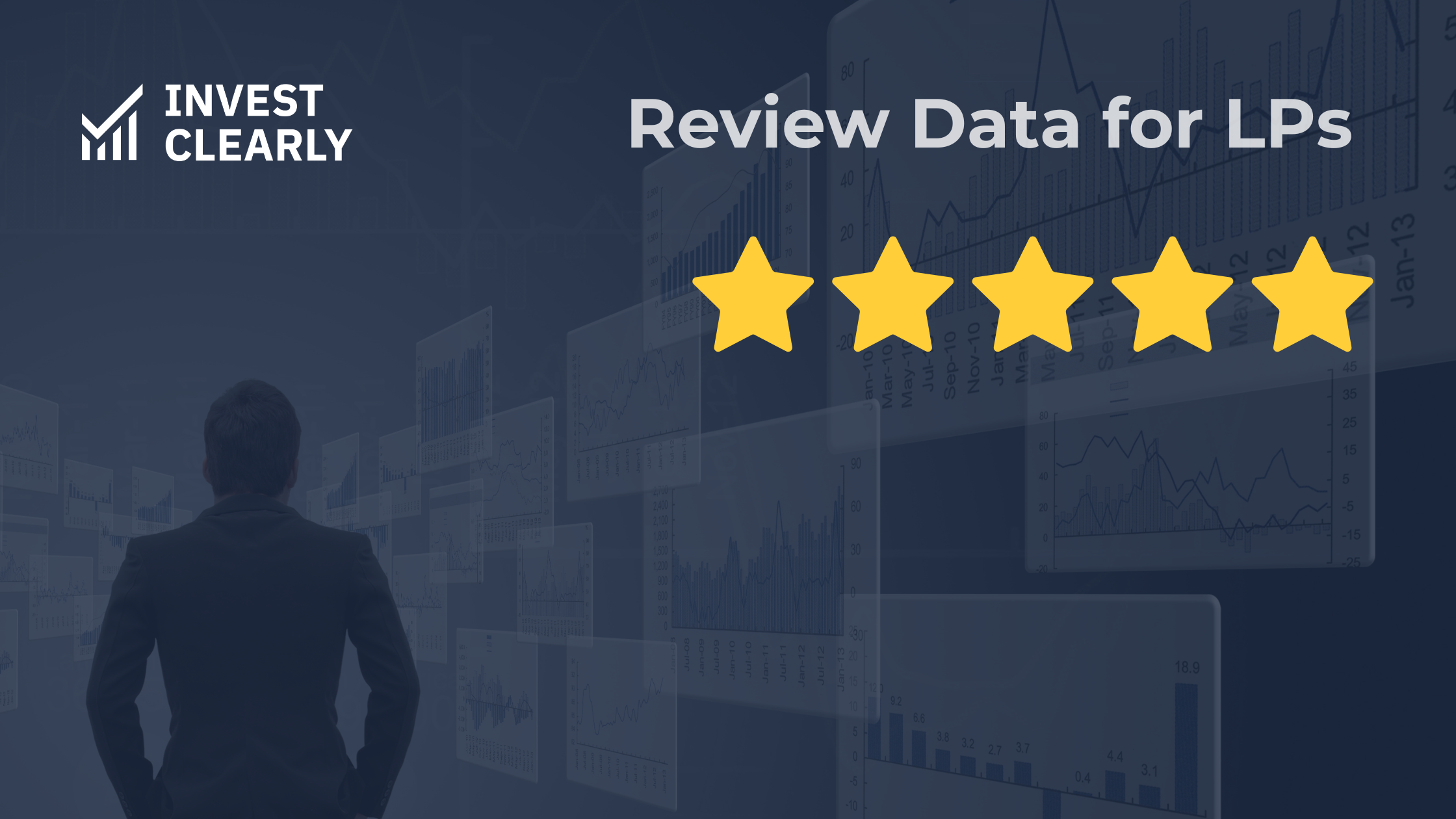
Investor Experience Index Q3, 2025: LP Takeaways
Discover quarterly insights of how LPs rate their experiences with GPs. Get data-driven questions to use when evaluating GPs.
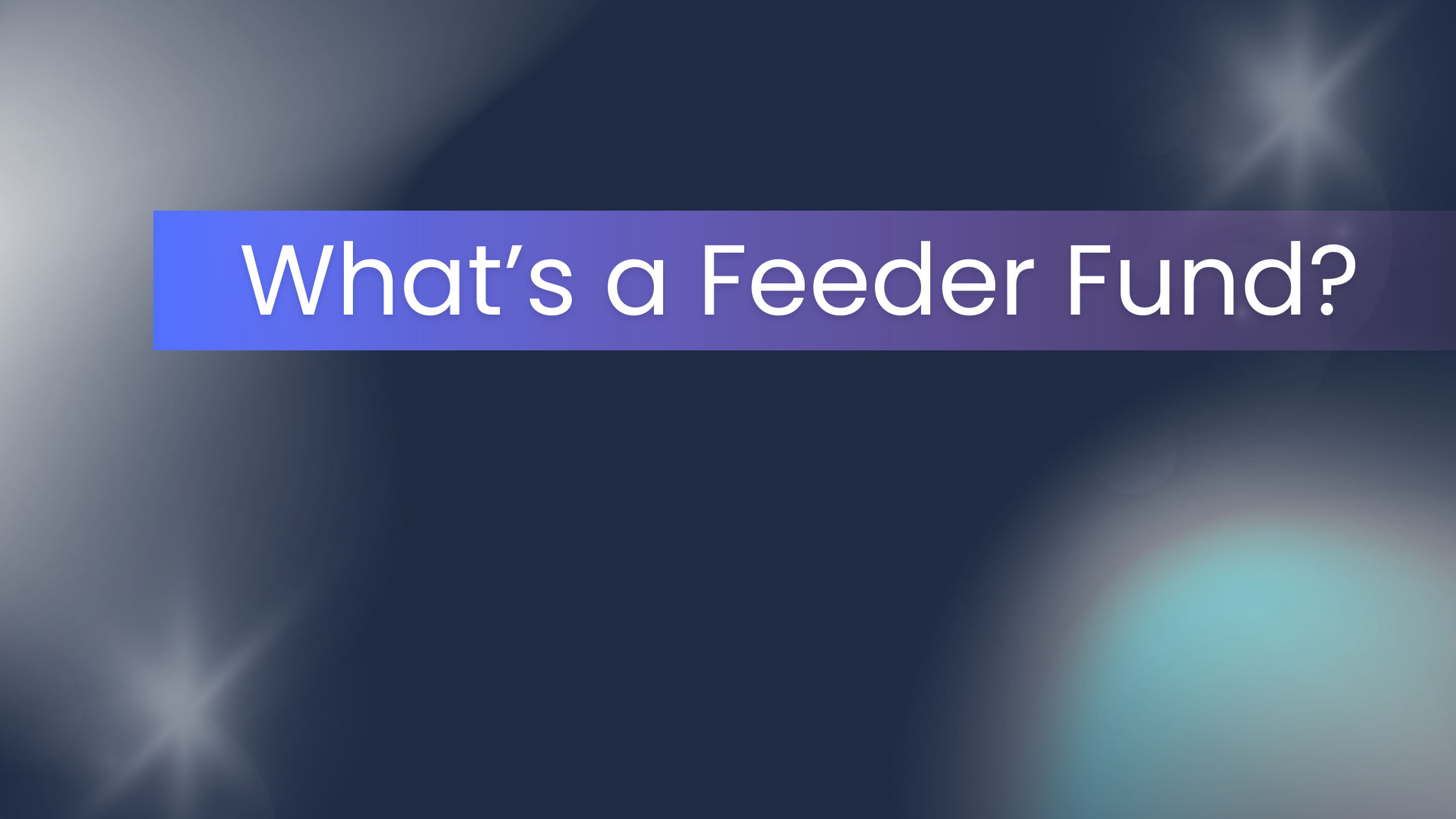
An Honest Assessment of Feeder Funds
Feeder funds get a bad reputation. The middleman can create drag, opacity, and misaligned incentives. But when done correctly, they’re useful for access and diligence. The problem is, almost nobody uses them correctly in retail real estate investing.
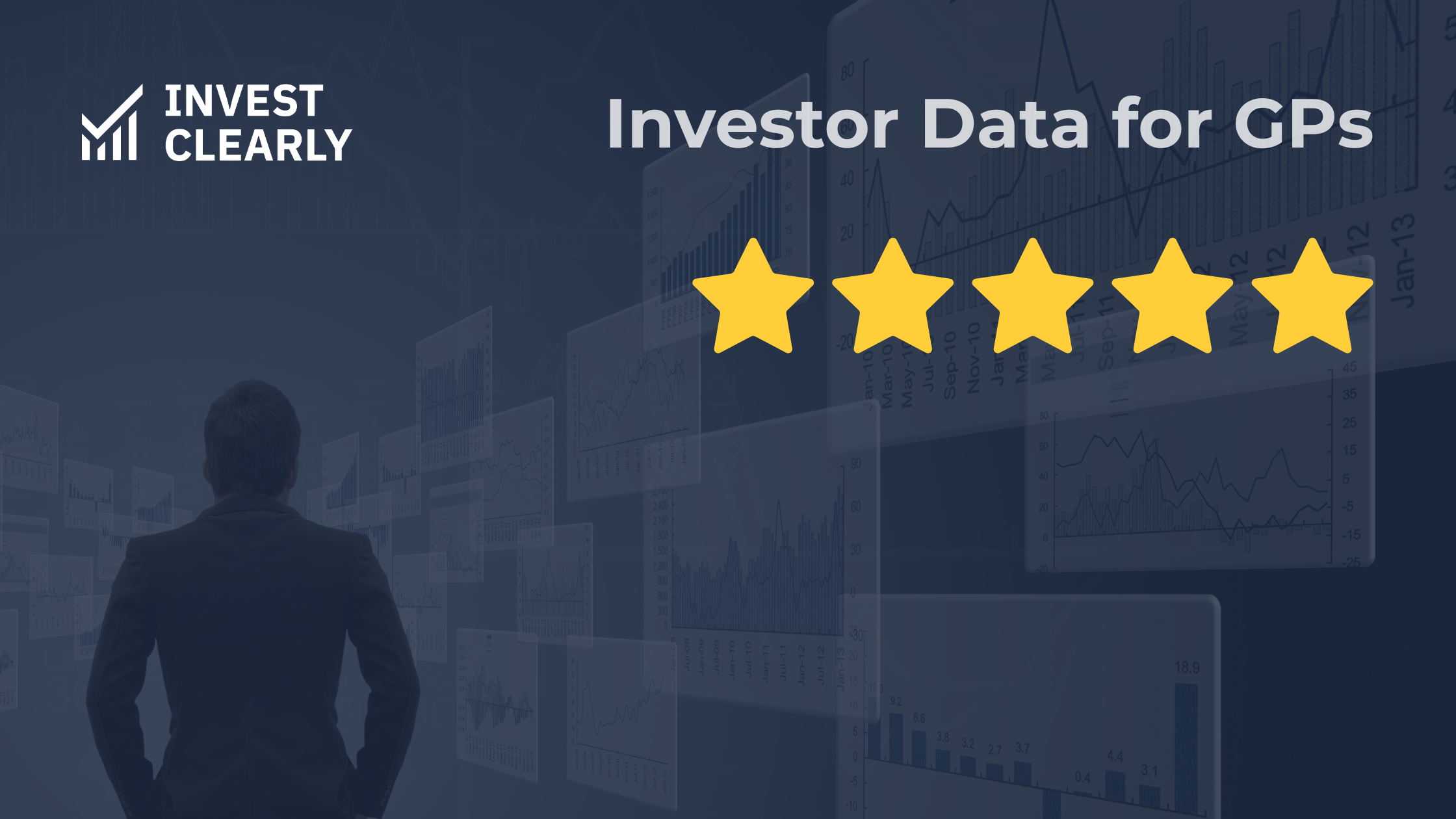
Investor Experience Index Q3 2025: GP Takeaways
The Investor Experience Index provides a quarterly snapshot of how limited partners (LPs) rate their experiences with general partners (GPs). The data for this report is drawn exclusively from verified investor reviews published on Invest Clearly in Q3 2025.
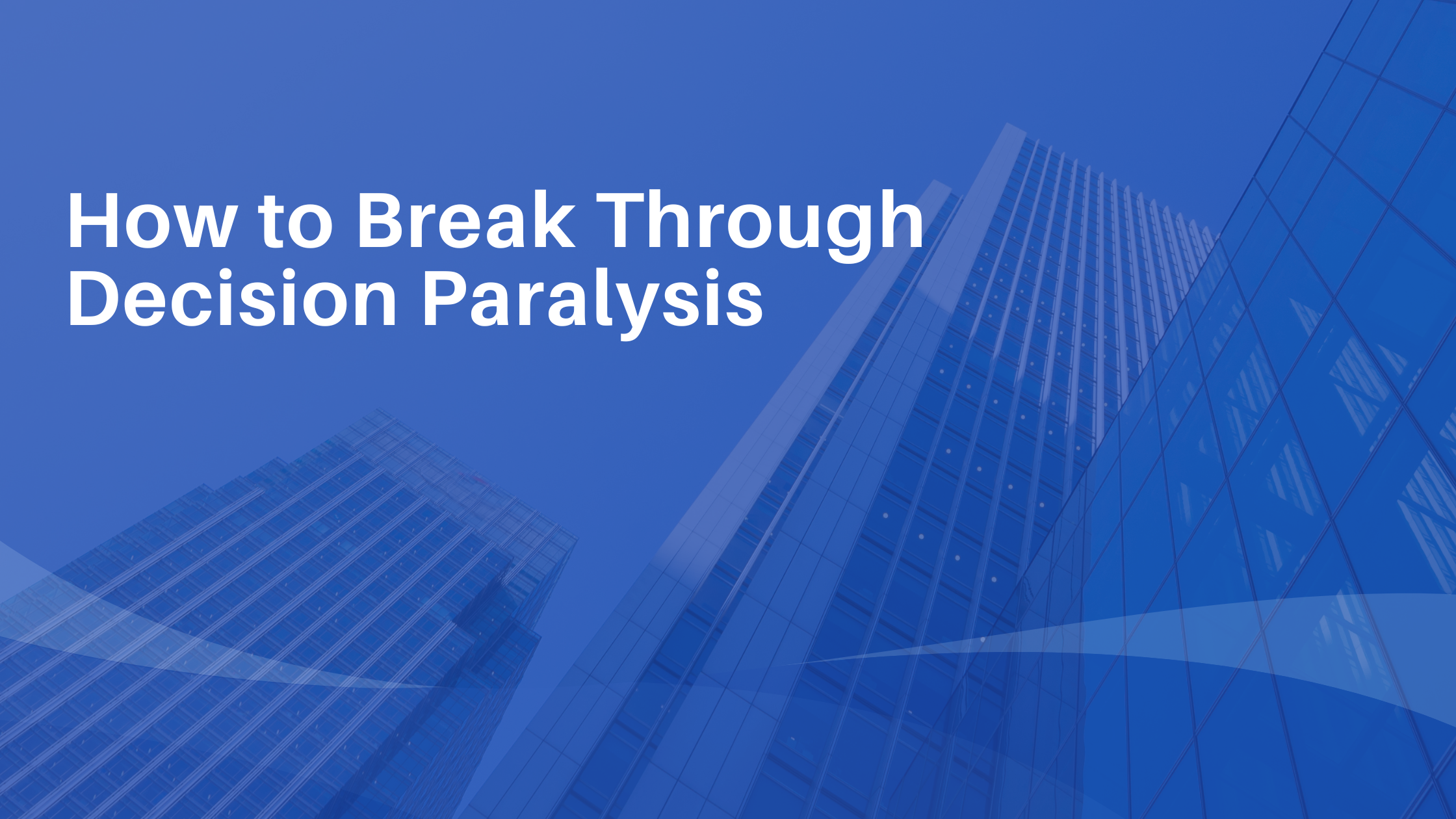
From Interest to Action: A Step-by-Step Guide for First-Time Syndication Investors
Four steps to help new investors invest in syndications confidently and move past decision paralysis.
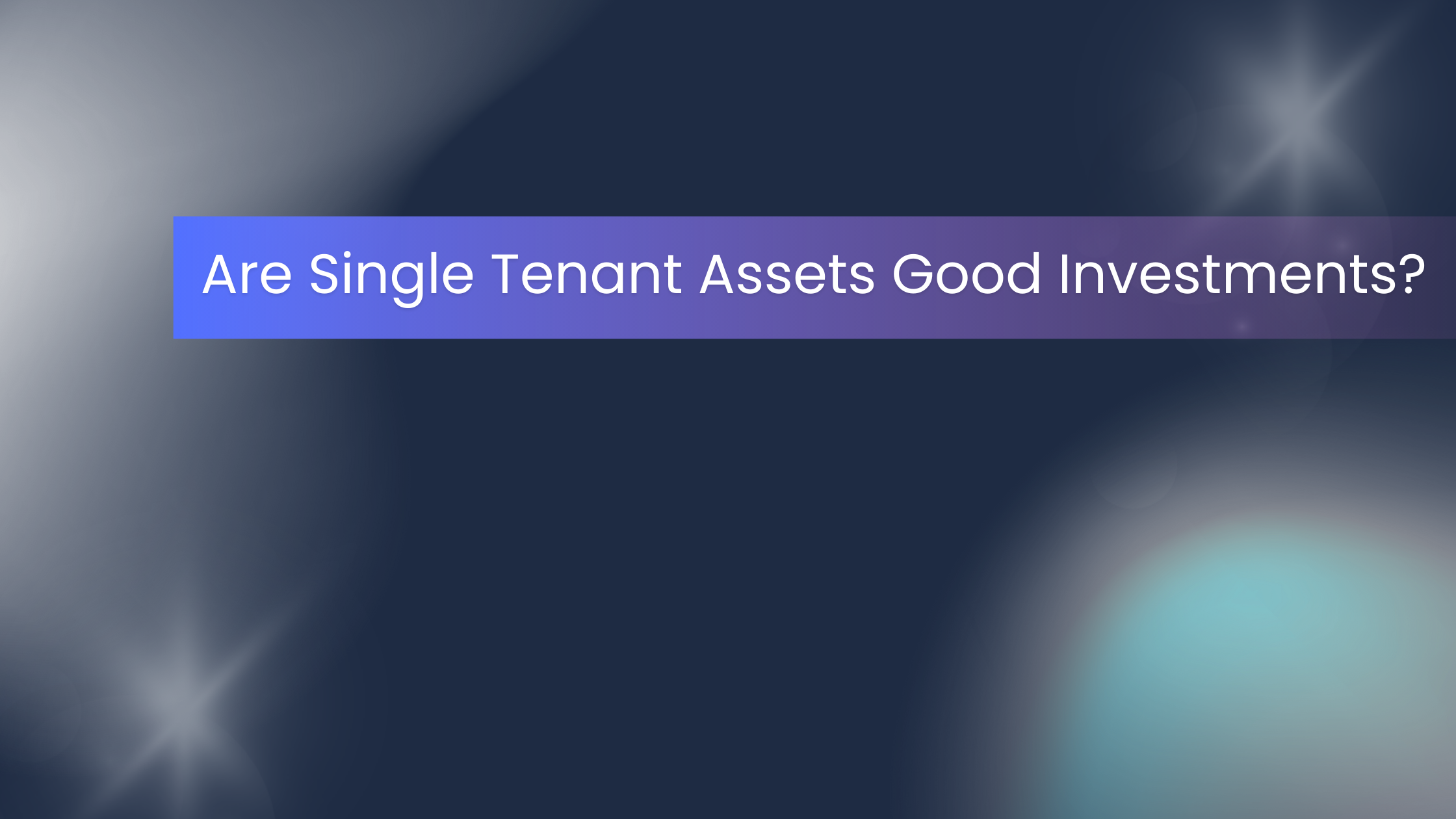
Single-Tenant Net Leases: A Simple Way to Build Predictable Income
Discover why single-tenant net lease properties offer investors steady income, lower risk, and passive management.